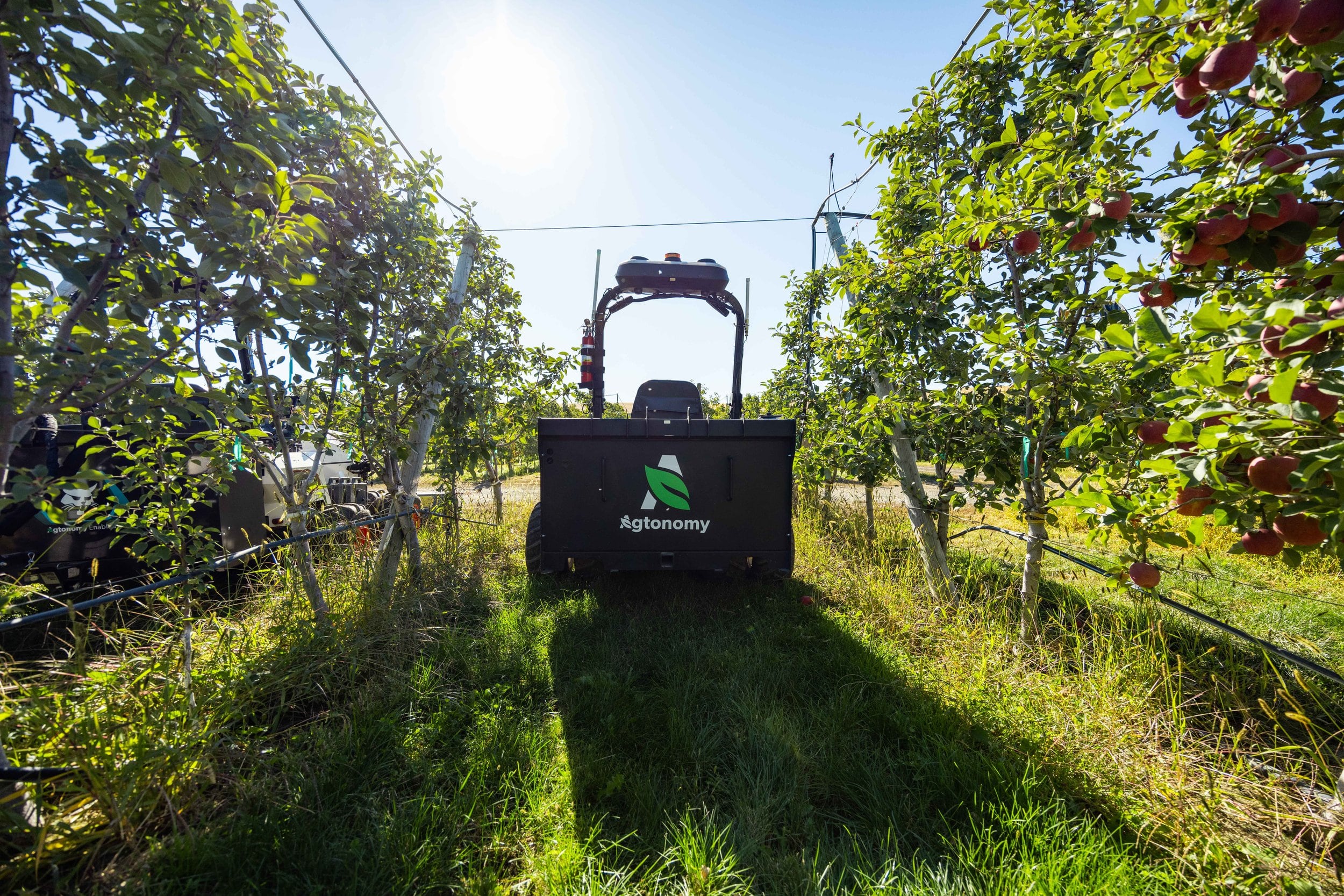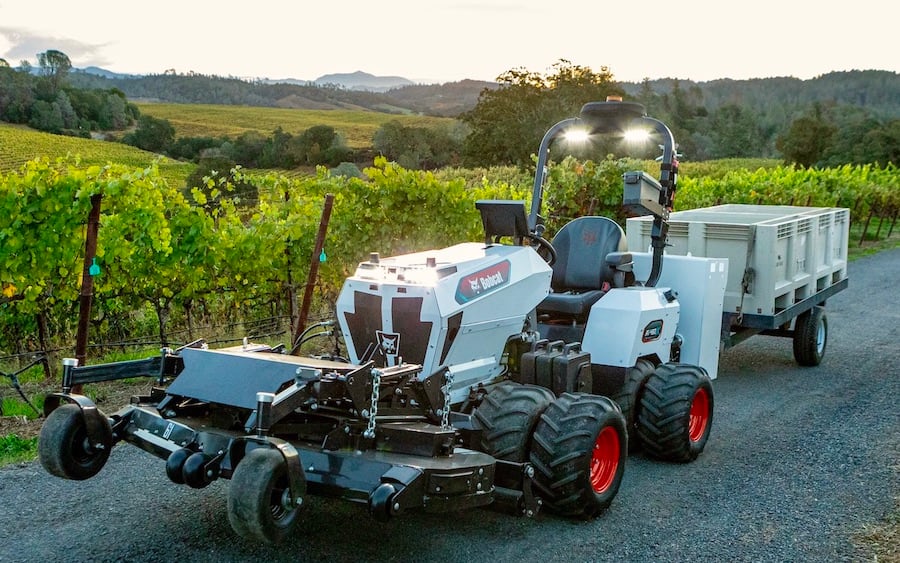Kubota is bolstering its open innovation strategy with a partnership with US crop automation software company Agtonomy, as the original equipment manufacturer (OEM) works to address connectivity and data processing issues that impact agtech adoption, Brett McMickell, CTO at Kubota North America, told AgTechNavigator.
Kubota partnered with Agtonomy to bring automated specialty crop technology to its M5N tractors, improving sprayer operations and reducing pesticide uses, as shared in a press release earlier this month.
In 2023, Agtonomy partnered with Bobcat on a similar deal to bring productivity enhancements to Bobcat’s equipment, according to a press release at the time.
Growing row crops — i.e., corn, wheat and soybeans — is “fundamentally different” than specialty crops like grapes, tree nuts, etc., making automation more difficult, McMickell noted.
“Agtonomy brought not only interesting software, but they also developed that system in specialty. So, they developed that in the wine and table grapes orchards, which are exactly the location of our customers,” McMickell elaborated.
Kubota and Agtonomy connected over three years ago on a potential partnership, said Tim Bucher, CEO of Agtonomy. Founded in 2021, Agtonomy decided early on that it did not want to go toe-to-toe with OEMs but instead wanted to work with them to solve grower issues, Bucher noted.
“From the very beginning, we said, ‘Hey, let’s make this about helping existing OEMs, who are leaders in [equipment], and help them accelerate their digital transformation because we all know where the puck is going,’” he elaborated.
He added, “They have to digitally transform — just like other industries — and we can focus on software and AI ... because we would be awful doing what they do, which is engineering incredible equipment and manufacturing it like nobody can and support it like nobody can."
Ag’s problems are ‘so big that one company cannot solve it all’
Over the years, Kubota used strategic partnerships and investments in start-ups, like French start-up UV Boosting, to complement its machine and technology offerings. The problems facing the ag sector are “so big that one company cannot solve it all,” requiring a platform approach to finding innovation and partners, McMickell explained.
“By creating this [open innovation] platform, we are allowing people to innovate on the edges and solve problems that we did not even know existed. So, [it is] similar to what happened with the iPhone. The iPhone is doing things that Steve Jobs had no idea that it was capable of doing,” McMickell said.
Additionally, Kubota acquired US agtech company Bloomfield Robotics last year to incorporate the start-ups’ AI-enabled sensors into its suite of smaller “sub-200 horsepower tractors,” McMickell said.
The AI sensors “are digitising the crop as the tractor moves,” creating “a digital twin” in the process, allowing farmers to assess in real-time when a fruit is ready to harvest or a field has a pest problem, he added.
“People who are using our technology in agriculture and construction, it is their livelihood. [If] we mess up the agricultural product and ruin that crop, we are ruining their livelihood.”
Brett McMickell, CTO at Kubota North America
The edge-to-cloud continuum: Where should data be processed?
Kubota is “collecting terabytes of data” through applications like Bloomfield, McMickell said. Processing that large amount of data can raise computer processing capacity and connectivity issues — a persistent obstacle for agtech adoption — he explained.
Where data is processed largely depends on how quickly the grower needs that information, McMickell added. The edge-to-cloud continuum “is a hot area of research” in tech, and Kubota is keeping tabs on the latest research to improve services for its customers, McMickell said.
For instance, a grower who needs the data right away – like in the case of using perception technology to determine if a crop has bunch rot – will have the data processed close to the source like in the case of a tractor-mounted sensor, McMickell explained. However, a grower might not need to review a crop forecast right away, so that information can be processed on the edge of a network, he added.
Additionally, physical AI technologies, like Agtonomy, interact with the physical world through sensors and processes the data on the device itself, circumventing the need for internet connectivity, Bucher explained.
“We have onboard compute, fully self-contained. It does not need internet access. It does not need GPS, and it can have this perception solution that translates AI to these physical devices. ... We really focus on the physical AI and the incorporation of data to make that better and better,” Bucher said.
‘Connectivity is a huge barrier in agriculture’
Hand-in-hand with data processing concerns are issues related to internet connectivity, which provides the backbone to many agriculture technologies, McMickell said. “Connectivity is a huge barrier in agriculture,” he emphasised.
Satellite internet connections, like through Elon Musk’s Starlink, are “easing some of the burden,” but satellite directionality can cause problems, McMickell said. Additionally, “satellite communication does not have good uplink,” which is more important than download speeds for agtech, he added.
Agtech faces several other obstacles, including the price and usability of the technology and “building trust” with growers to adopt newer ways to work, McMickell explained.
“People who are using our technology in agriculture and construction, it is their livelihood. [If] we mess up the agricultural product and ruin that crop, we are ruining their livelihood,” McMickell said.




